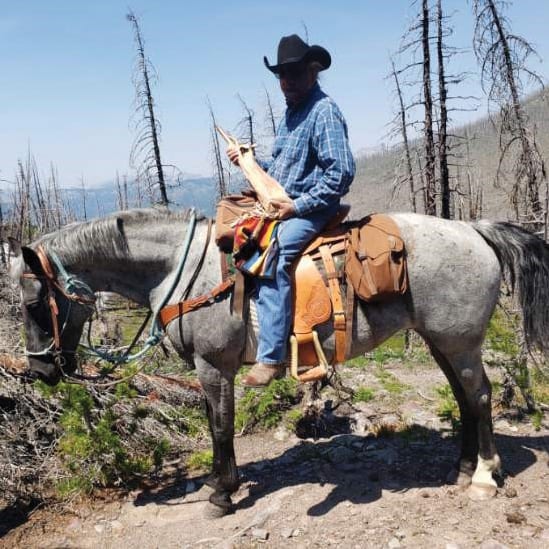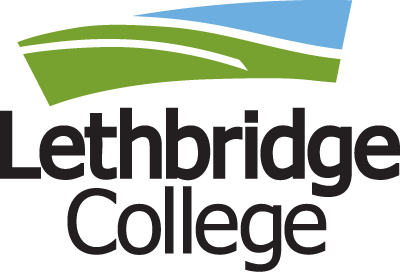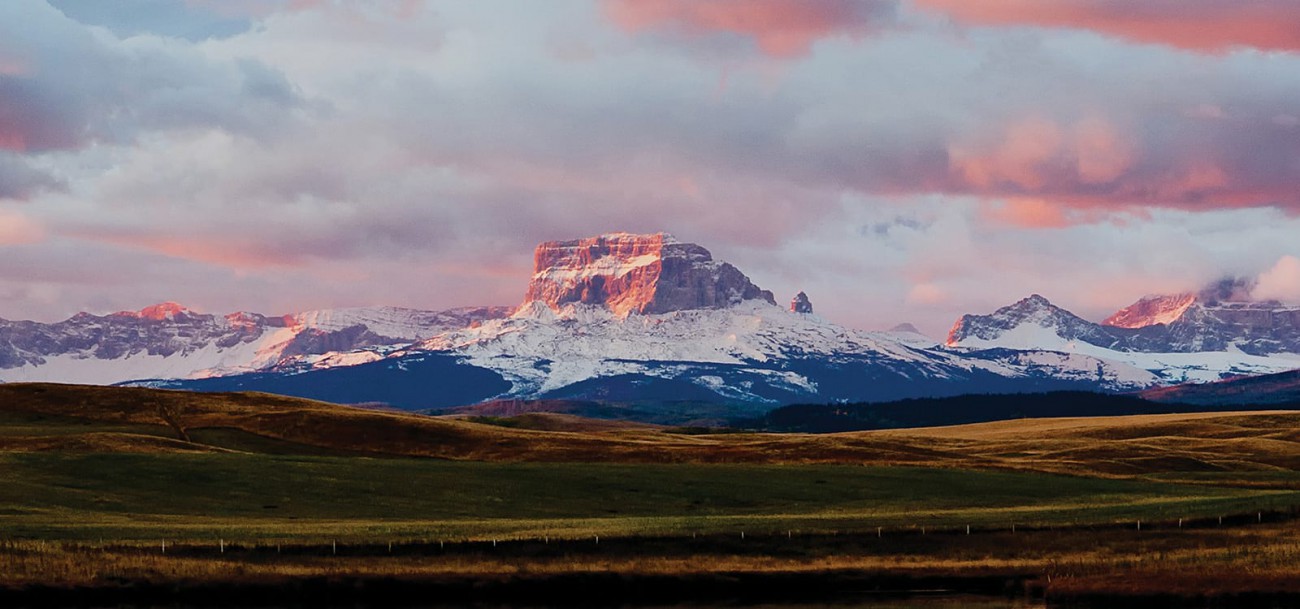Henry David Thoreau called it the tonic of the wilderness
...and exploring the heights and delights of the outdoors has seemed to be just that for many in the Lethbridge College community during the COVID-19 pandemic.
As pandemic-time passed and colleagues, students and alumni continued to share stories of finding joy in nature, the Wider Horizons team started brainstorming. What if we created a special issue dedicated to the beauty and bounty of Blackfoot territory? What if we shared the stunning photos that were filling up our cell phones, and offered insider’s tips and insights of where to go, what to see and, sometimes most importantly, where to eat? What if we could get students and other employees across campus involved in some of the storytelling and photography? Most importantly, what if we invited a Blackfoot scholar and knowledge keeper to share the Blackfoot stories of this land with us – and with our readers?
It took almost a year to accomplish all those “what ifs,” but we did it. And the result is this 26-page special section focused on six remarkable areas in southern Alberta: Ninaiistáko (Chief Mountain); the Castle Wilderness area; Writing-on-Stone; Waterton; the Crowsnest Pass area; and Lethbridge’s own coulees.
If you, like Thoreau, discover you need the tonic of the wilderness and believe that “we can never have enough nature,” we hope this special issue proves to be a useful guide for you this summer – and for seasons to come.
CONTRIBUTORS TO THIS SPECIAL SECTION:
Blackfoot storyteller: Ninna Piiksii (Mike Bruised Head/Chief Bird)
- Ninna Piiksii is a fluent Blackfoot speaker and a spiritual leader for sacred societies. He is completing his PhD in Cultural, Social and Political Thought at the University of Lethbridge where his research focuses on restoring the Blackfoot names of the mountains, valleys, trails and waterways in Paahtómahksikimi and across traditional Blackfoot territory.
Special guest editor and writer: Dave McMurray, manager of Applied Research Operations.
- Dave runs the hiking and scrambling blog, peaksandstreams.com.
Photography: Aaron Keeling, Dave McMurray and Lethbridge College employees
Story: Lisa Kozleski
Design: Dana Woodward
MUCH MORE TO SEE
The beauty and wonder of Blackfoot territory cannot be fully captured in 26 pages of a magazine, or even 26 volumes of a book. The views change with the time of day, the seasons and the years, as well as with the company you keep when you head out into nature. The Wider Horizons team encourages you to visit and re-visit these places and others in our region, being open to learn new lessons each time.
In addition to visiting these memorable places yourself, we also invite you to take in more sights in these three ways:
- Check out the slideshow created by Lethbridge College employees throughout the summer and fall of 2021 and winter and spring of 2022. Just go to learn.lc/never-enough-nature to savour some of the most marvelous spots in our region.
- Visit the Galt Museum in Lethbridge before Sunday, June 19, to experience a new exhibit, Nitsitapiisksakoo: Nitsitapii Landscapes. Or contact the Galt to request the travelling exhibit be shared in your community. This exhibit has been co-curated by Ninna Piiksii (Mike Bruised Head), Itsinohtss piyaki (Rebecca Many Grey Horses), and Bobbie Fox, and it includes videos of Ninna Piiksii sharing many of these same stories in Blackfoot that he has shared in this special issue of Wider Horizons. More details can be found at learn.lc/galtlandscapes.
- And last but certainly not least, Ninna Piiksii (Mike Bruised Head) says one of the best ways to learn about this land is to visit a Blackfoot elder or grandparent and ask to hear more stories. You won’t be disappointed.
Chief Mountain | Castle Wilderness Area | Writing-on-Stone | Waterton | Crowsnest Mountain | Lethbridge's Coulees


A STORY OF NINAIISTÁKO
CHIEF MOUNTAIN
By Ninna Piiksii (Mike Bruised Head/Chief Bird), pictured above on Sage Pass on the Continental Divide.
I will tell this story as the elders told it to me. It’s their stories I am reciting. The stories are not my own.
I will start with Ninaiistáko, Chief Mountain. At the beginning of time, before being called Ninaiistáko, a story goes that Ksiistsi-komm (the Thunder spirit) came into a human form, and he had a falling out with the people because he captured the wife of a man without his permission. Thunder began to harm the people and was very hard on them. The man wanted his wife back, so the man and the people called on Omahkai’stoo (the Big Raven) for help. They asked the Raven to help them settle this, for the man to get his wife back and for Thunder to quit tormenting the people.
And so Raven said, I’ll help you. And the battle went on for a long time. Thunder tried to hit Raven with his lightning, but Raven used his wings to cool the air so Thunder couldn’t use his lightning. And the battle continued. And finally, cold weather and winter came. And the lightning could not strike the people because of the cold. And finally they made an agreement, and Raven told Thunder to give the woman back and to stop tormenting the people.
Thunder agreed, and said OK, I will give the people what they want. And with that, Thunder and Raven agreed to exchange their mountain homes. Thunder would now call Ninaiistáko (Chief Mountain) his home, and Raven would call Omahkai’stoo, the mountain we called Crowsnest Mountain, his home. Today, Ksiistsi-komm represents the spring, the warm season, and Omahkai’stoo represents the winter season.
Thunder was to give the people a nináímsskaan – a bundle with a pipe – as a peace agreement. And Thunder agreed and told Raven that he would protect, and he would watch over them and guide them. And so they agreed.
Thunder said: I will give this pipe to the people, and that way we will maintain peace forever. And the people, when they hear thunder, they will have to open this bundle, they will have to smoke it. I will give them songs too. The songs can only be sung with the ceremony. And they can transfer the pipes in the bundle to other people. And as long as they do these ceremonies, I will watch over them. I will watch over them as long as the sun shines.
And thus Chief Mountain – Ninaiistáko – is the home of thunder. Chief Mountain is powerful. It has withstood all kinds of wars. It has withstood colonization. It has withstood European thought.
And today many people during summer go to fast and pray there. They always make sure to offer tobacco, berries, meat, cloth and hide. And the Blackfoot and Blackfeet people, we honour that mountain, Chief Mountain – Ninaiistáko. The vision quest experience is still active with the Blackfoot people.

When heading out, remember that many of these sites are considered sacred by the Blackfoot people and are still used today for ceremonies and spiritual practices. If you come across cairns of stones or gifts left from a ceremony or prayer, you should leave the area untouched (although it is considered proper protocol to leave an offering of tobacco at these sites.)
NINAIISTÁKO - CHIEF MOUNTAIN
Located in Glacier Country, Montana, on the eastern border of Glacier National Park and the Blackfeet Indian Reservation – and seen on a clear day from many places throughout Blackfoot territory (including Lethbridge College). Elevation: 2,769 m

 RECREATION AS RE-CREATION
RECREATION AS RE-CREATION
REFLECTING ON THE MEANING OF MOUNTAINS AND THE BENEFITS OF BEING OUTDOORS
Story and photo by Dave McMurray, guest editor
We are beyond privileged to live in southern Alberta – a fact I am reminded of every time I hike in the coulees, stand in the clear waters of an east slope stream, or venture onto a mountain. This land that we share together shapes where we live, how we live and who we are. It is a gift and a responsibility.
When Wider Horizons editor Lisa Kozleski graciously invited me to share what our southern Alberta landscape means on a personal level, I readily agreed, though I’m not sure I was prepared for the meandering paths of thought that I would find myself on. Every trip I make into the backcountry – or the front country – provides me with new layers of meaning, and sorting these into something coherent has been challenging. Indeed, as everyone has their own personal connections to the land, my reflections are limited and that’s why I’m glad to be only one voice in this issue. The photos and stories shared by members of our community are collectively powerful and serve to invite all of us into not only going outside and onto the land but reflecting on why we do.
Recent scholarship has identified the psychological and physical benefits of spending time in the world-out-of-doors, including the effects it has on brain function and emotional well-being.
For me, this rings true as outdoor recreation has always meant re-creation; that is, it returns me to a place of wholeness.
Being outside is where I can experience risk and wonder woven together in ways that are otherwise unavailable. I will never forget when my kids were little, taking them to the trout stream of my youth and inviting them to turn over rocks to see what was underneath. The excitement they showed when a stonefly nymph scurried away, or a caddis larva retreated into its casing was magical. Before it was simply a rock, but now they saw it as home to a myriad of life. That in one small part is what being outside as an adult allows me to recapture. Every time I see morning sunlight illuminate a band of red argillite or witness the intricate colours of a brook trout in the fall, I am brought back into wonder – and for me, that gives life.
Beyond this, I love the coupled sense of adventure and exploration. When I see a mountain, my mind immediately looks for natural routes to the top. If there is a known track, that’s great because my experience will be different than anyone else who has used it before. Different day, different season, different weather, and so on. If there isn’t a documented route, the process of planning and actualizing it, adapting and changing course on the fly, and eventually making the top (and sometimes not), is incredibly fulfilling.
For me, time on the land is relational. First and foremost, it means time with my own family, where my wife, Melanie, an elementary school vice principal, constantly looks for interesting natural artifacts that she can incorporate into a curriculum of outdoor play for children. As we walk together, her keen observations remind me that learning from nature needs to be done within nature and through the context of community. Fostering authentic attachment to the natural world is important for society on so many levels, let alone addressing climate change in a serious manner.
Watching my adult kids take their love for the outdoors and translate this into their own contexts is truly special. I have been blessed to stand on many summits and wade many waters with my kids, and I remember each trip in vivid detail. It started with walks in the coulees when they were young and progressed from there. Indeed, there is something powerful about sharing an outdoor adventure with your children no matter their age – or yours. It’s not just the quantity of the time together, but the constant shifting of focus and intensity of presence. Sometimes it is problem solving together to get past an obstacle or pick a fly pattern, sometimes it’s contagious laughter because dad fell, sometimes it’s stopping to admire a delicate alpine buttercup, and sometimes it’s comfortable silence – though that’s a hard one for our family! Healthy risk is important, and witnessing the grit that outdoor activities have built into my kids is something that I know will serve them well.
The relational benefits of outdoor adventure extend beyond my immediate family. Hiking and scrambling have allowed me to develop deep friendships with truly amazing people. Spending hours and sometimes days on an adventure allows you to get to know a person beyond the superficial. It also allows a common story to develop – usually around something funny – and sharing a story is foundational to both family and friendship. In an age when many men lack quality friendships, I am incredibly grateful to my nephew Jeff, and friends Andrew, Brad, Lance, Mark, Raff, Sonny, and Zosia for what they’ve taught me through deep conversations and laughter – lots and lots of laughter.
Finally, while all of this is true, there is also risk in romanticizing nature into something it is not. I am acutely aware that the natural world is full of lessons on the hardship and unfairness of life. It is also a place where even the most prepared individual or group may find themselves in trouble. As the saying goes, “the mountain doesn’t care,” and this reality translates into everyday life. One thing that I’ve learned in the backcountry is to be flexible because you never know what the mountain – or life – will throw at you, despite all of the planning you may have done. Reflecting on the fragility and harshness of nature translates into appreciation for life, however long or short that may be.
As you look through the photos and read the stories in the following pages, I again invite you to reflect on your own experiences and stories from the land we share. Each time that we enter the natural world as watchful and engaged participants, we get a glimpse of the knowledge and power that surrounds us. If we’re open, these experiences can transform our everyday lives.




